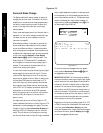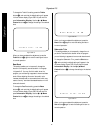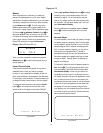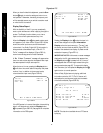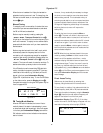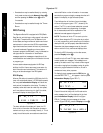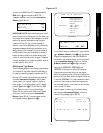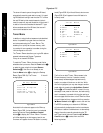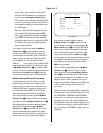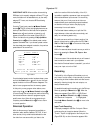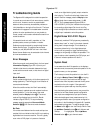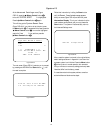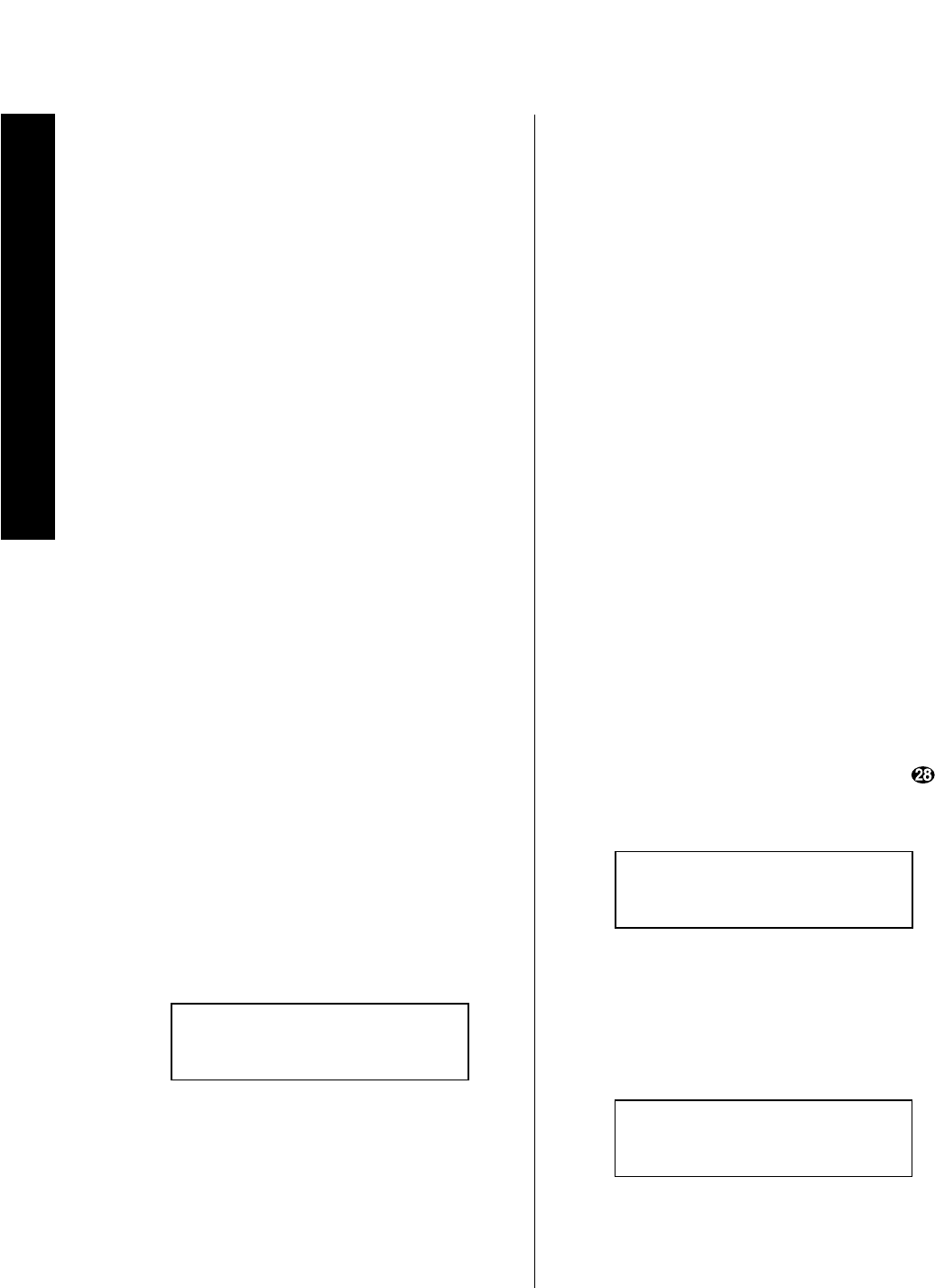
Operation
48
Signature 2.0
•
Preset stations may be recalled directly by entering
their preset number using the
Numeric Keys w
,
and then pressing the
Enter
button
v
within
five seconds.
•
Preset stations may be recalled through the
Tuner
Menu
.
RDS Tuning
The Signature Series 2.0 is equipped with RDS (Radio
Data Service), which brings a wide range of information
to FM radio. Transmitted by over 700 stations in the
United States, and large numbers of stations and broad-
cast networks in other countries, RDS is a special data
signal that the stations transmit without any interference
to normal broadcasts. Depending on how a station
chooses to program the RDS data, it may include station
call signs, network information or identification
messages, special text messages or descriptions of the
musical selection and a description of the station’s format
or program type.
As more stations become equipped with RDS cap-
abilities, the 2.0 will serve as an easy-to-use center for
both information and entertainment. This section will
help you to take advantage of the RDS system.
RDS Display
When an FM station is transmitting RDS data, the 2.0’s
tuner will automatically detect it. If RDS data is present,
the front panel
Information Display
will show two
main parts of the data after a brief delay. This delay is
necessary as the data is sent at a relatively slow speed,
and it may take a minute or two for the 2.0 to collect,
process and display the data (Figure FPD-14).
Figure FPD-14
The lower left side of the display will show the “ID”
field, which is information that the station chooses to
transmit so that you may more easily identify it. This is
usually the call letters, but some stations transmit their
02 89
.
9 FM
.
Vol
> KXXX < PUBLIC 10
network affiliation or other information. In rare cases,
some stations program a lengthy message here that will
appear in the display in eight-character pieces.
The middle portion of the lower line on the display
will show the program type or “PTY”, chosen by the
station. The PTY is a set of preset codes that are used
to describe the station’s programming. A complete
list of these codes, as well as an explanation of the
abbreviations used appears in Appendix C.
NOTE: The choice of which PTY to use is up to the
station. Some change the PTY during the day to adjust
it to their programming, while others may not choose a
description that you feel properly describes the station.
Remember that these messages are set by the radio
station, and the 2.0 only receives and displays them.
To show the RDS information on the video screen,
press the
Display
button
x
.
In addition to the ID and PTY data, many stations also
transmit special text messages. This message is com-
posed by the station and it may include a wide range of
information ranging from the pledge number for public
stations to program schedule information, DJ call-in
numbers and many other purposes.
To display the text message press the
RDS
button
once and
RDS TEXT
...
will appear in the front panel
Information Display
(Figure FPD-17).
Figure FPD-17
There will be a brief delay until the 2.0 receives the
entire message, then it will be displayed in the front
panel
Information Display
’s lower line (Figure
FPD-18). To display the text message in the video
monitor (Figure OSD-25), press the
Display
button
x
.
Figure FPD-18
04 91
.
5 FM
.
TO PLEDGE CALL 800-4
04 91.5 FM
.
Vol
RDS TEXT
...
10



